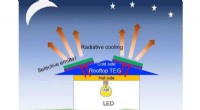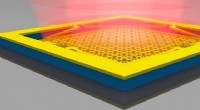
Wetenschap
What is formed when light strikes an opaque materials?
* Reflectie: The light bounces off the surface. This is what allows us to see opaque objects. The amount of reflection depends on the material's surface properties. Shiny surfaces reflect more light, while dull surfaces absorb more.
* absorptie: The light is absorbed by the material, converting the light energy into heat. This is why dark-colored objects tend to get hotter in the sun than light-colored objects.
* verstrooiing: The light is scattered in different directions, rather than being reflected in a single direction. This is why we see through frosted glass, but not clear glass.
De relatieve hoeveelheden reflectie, absorptie en verstrooiing hangen af van de eigenschappen van het materiaal, inclusief de kleur, textuur en compositie.
Samenvattend: When light hits an opaque material, it is reflected, absorbed, and/or scattered . The exact proportions of each process determine the material's appearance.
Hoofdlijnen
- Wat is een basisprincipe van kinesiologie?
- Nieuw ontwikkelde schakelaar activeert genen duizenden keren beter dan de natuur
- Wat zijn de doelstellingen van agarose?
- Waarom is evolutie een wet en natuurlijke selectietheorie?
- Welke plantencelstructuren lijken te ontbreken in de cellen van een uienlamp?
- Overeenkomsten en verschillen tussen osmose en diffusie
- Wat betekent substraten?
- Commerciële voorouderstests kunnen onthullen hoeveel Neanderthaler-DNA u heeft
- Welke mariene dieren of planten beginnen met letters A-Z?
- Onderzoekers ontwerpen efficiënt goedkoop systeem om 's nachts stroom te produceren

- Nieuw apparaat dat infrarood uitstraalt, kan energie uit afvalwarmte halen

- Lasergestuurde deeltjesversneller die paren elektronenbundels met verschillende energieën kan genereren

- Nieuwe methode om signaalverlies in verre-infraroodinstrumenten te meten

- Broedkolonies van koningspinguïns zijn gestructureerd als vloeistoffen

 Wanneer werd Pakora ontdekt?
Wanneer werd Pakora ontdekt?  Onderzoekers bepalen hoe de bacteriën van veteranenziekten zich vermenigvuldigen en ziekten veroorzaken
Onderzoekers bepalen hoe de bacteriën van veteranenziekten zich vermenigvuldigen en ziekten veroorzaken  Zal de scheve toren van Pisa ooit vallen?
Zal de scheve toren van Pisa ooit vallen?  Wat is verantwoordelijk voor het absorberen van het grootste deel van de inkomende zonnestraling?
Wat is verantwoordelijk voor het absorberen van het grootste deel van de inkomende zonnestraling?  Onderscheid u van de kudde:hoe koeien communiceren gedurende hun leven
Onderscheid u van de kudde:hoe koeien communiceren gedurende hun leven  Uit liefde voor techniek! Seksrobots en virtual reality
Uit liefde voor techniek! Seksrobots en virtual reality Zijn er nog andere vlaggen op de maan naast ons?
Zijn er nog andere vlaggen op de maan naast ons?  Hoe magneetzweef werkt
Hoe magneetzweef werkt
- Elektronica
- Biologie
- Zonsverduistering
- Wiskunde
- French | Italian | Spanish | Portuguese | Swedish | German | Dutch | Danish | Norway |

-
Wetenschap © https://nl.scienceaq.com


